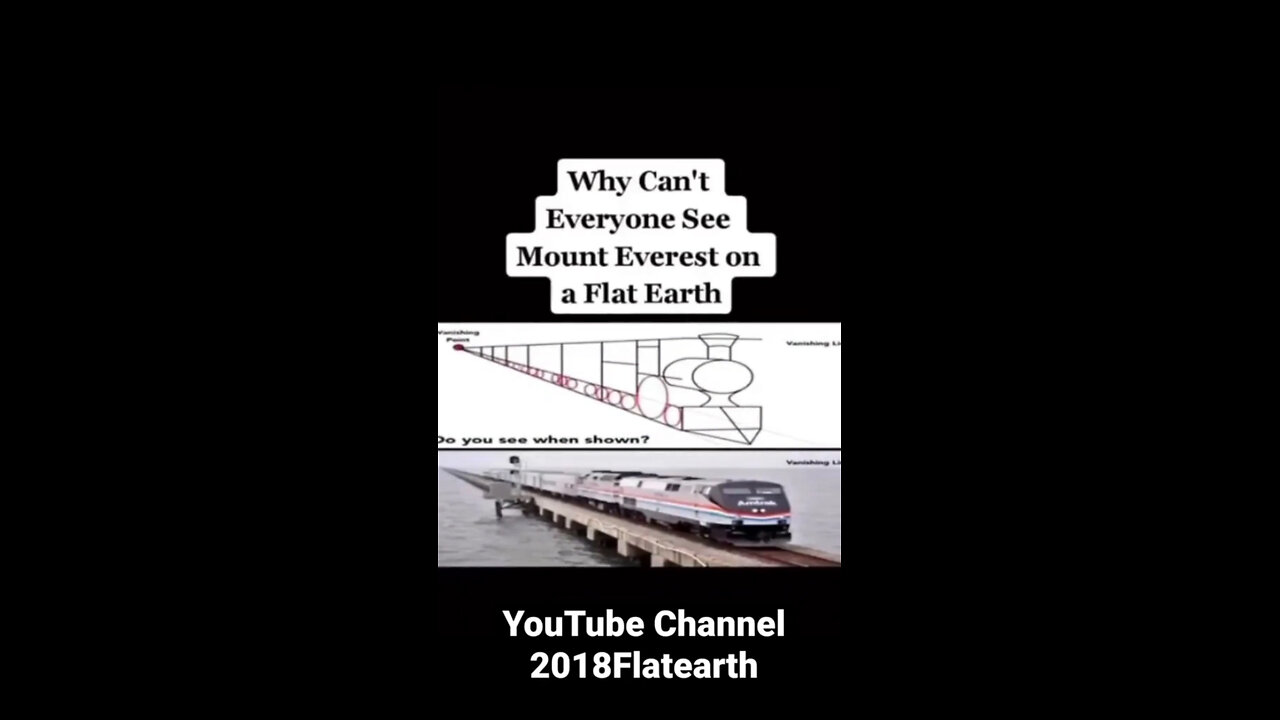Premium Only Content

Exploring the Limitations of Long-Distance Visibility on a Flat Earth Model
The concept of a flat Earth provides a unique perspective on the natural phenomena we observe daily. One common query that arises within this framework is why we cannot see distant lands, such as England or Japan, from American shores using a telescope. This article delves into the various factors that affect long-distance visibility on a flat Earth, offering a comprehensive explanation rooted in atmospheric and optical science.
Atmospheric Refraction
Understanding Atmospheric Refraction:
Atmospheric refraction occurs when light passes through the Earth’s atmosphere and bends due to changes in air density. This bending is caused by variations in temperature and pressure within different atmospheric layers. On a flat Earth, this phenomenon still plays a significant role in limiting our ability to see distant objects.
Impact on Visibility:
The bending of light distorts distant objects, making them appear lower or blurred. As light travels over long distances, the cumulative effect of refraction increases, significantly obstructing our view. Even with powerful telescopes, atmospheric refraction creates a barrier to clear visibility of faraway lands, such as the ability to see England from the US.
Aerial Perspective
Concept of Aerial Perspective:
Aerial perspective refers to the scattering of light by particles in the air, including dust, moisture, and other pollutants. This scattering effect intensifies with distance, causing distant objects to appear hazy and less distinct.
Impact on Clarity:
Over thousands of miles, the accumulation of these particles reduces visibility. The atmosphere acts as a filter, scattering light and diminishing the sharpness of distant images. Consequently, even advanced optical instruments cannot overcome the atmospheric haze to provide clear views of distant continents like Japan from American shores.
Optical Resolution and Technology Limits
Optical Resolution Defined:
Optical resolution is the ability of a telescope or other optical device to distinguish fine details. This capability is limited by factors such as lens quality, atmospheric interference, and the fundamental design of the optical instrument.
Technological Constraints:
The vast distances between continents exceed the resolving power of current optical technology. Atmospheric disturbances further degrade image quality over long distances. Therefore, telescopes cannot provide clear images of far-off locations, as the resolution necessary to discern such details diminishes with distance.
Line of Sight and Physical Obstructions
Understanding Line of Sight:
Line of sight refers to the direct path that light travels from an object to the observer. On a flat Earth, this path can be obstructed by natural and man-made features such as mountains, buildings, and vegetation.
Obstruction of View:
These physical barriers prevent a clear line of sight over long distances. Regardless of whether the Earth is flat or spherical, obstacles like the Rocky Mountains or urban skylines block the view, making it impossible to see across continents from ground level.
Perspective and Vanishing Point
Principles of Perspective:
Perspective causes objects to appear smaller and closer together as they move further away from the observer. The vanishing point is where parallel lines appear to converge, and objects disappear from view.
Effect on Visibility:
On a flat Earth, distant objects diminish in size and eventually merge into the horizon due to perspective. This optical effect means that, beyond a certain distance, objects become too small and faint to be discerned even with a telescope. The vanishing point limits our ability to see faraway lands, as they effectively disappear from view.
Conclusion
In conclusion, several factors within the flat Earth model explain why it is not feasible to photograph distant lands like England or Japan from American shores:
• Atmospheric Refraction: Light bending through the atmosphere distorts and limits visibility over long distances.
• Aerial Perspective: Particles in the air scatter light, causing distant objects to appear hazy and less distinct.
• Optical Resolution: Telescopes have limits on how far they can resolve details clearly, with distance reducing image quality.
• Line of Sight: Natural and man-made obstructions block the direct path needed to see across vast distances.
• Perspective: Objects shrink and eventually disappear from view as they move further away, merging into the horizon.
Understanding these principles provides insight into the complexities of long-distance observation, offering a coherent explanation from the flat Earth perspective. While these factors illustrate the challenges of seeing distant continents, they also highlight the intricate interplay of atmospheric and optical phenomena that shape our perception of the world.
-
 4:50
4:50
FragmentsOfTruth
1 day agoVatican Influence in the Supreme Court: The Hidden Jesuit & Papal Ties
1911 -
 13:19
13:19
The Pascal Show
16 hours agoCOMEBACK DERAILED! Jimmy Kimmel's Return To Late Night Hit After ABC Affiliates REFUSE To Air Show
42 -
 LIVE
LIVE
Lofi Girl
2 years agoSynthwave Radio 🌌 - beats to chill/game to
210 watching -
 2:17:05
2:17:05
FreshandFit
4 hours agoFrom SMALLVILLE to AB'SVILLE w/ Sam Jones III
76.9K4 -
 3:05:45
3:05:45
Price of Reason
10 hours agoTrump's UN Takedown! BACKLASH Over Disney's Jimmy Kimmel Return! Tulsa King Season 3 Premiere Review
119K16 -
 3:03:12
3:03:12
Badlands Media
12 hours agoDEFCON ZERQ Ep. 010
162K55 -
 9:46
9:46
Levi
1 day agoWhy XRP's Bull Run Will Be 10x Bigger Than The Last One - Raoul Pal
4.46K1 -
 20:13
20:13
Paul Barron Network
26 days ago $0.39 earnedXRP Vault Yields Coming in September!?🔥Flare CEO INTERVIEW
4.96K -
 3:00:12
3:00:12
TimcastIRL
7 hours agoJimmy Kimmel Show IN CHAOS Before Return, Affiliates REFUSE, Staff Says THEYLL QUIT
354K102 -
 2:49:26
2:49:26
Laura Loomer
7 hours agoEP145: Trump Makes BOMBSHELL Autism Announcement
47.1K18